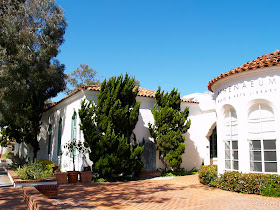
Title: The Painter from Shanghai
Author: Jennifer Cody Epstein
Publisher: W. W. Norton & Company, New York, 2008
Category: Historical Fiction
Number of Pages: 408 pages
What it is about:
Pan Yuliang was a mid 20th century Chinese artist, renowned for her Post-Impressionist self-portraits and paintings of nude women. She had been sold to a brothel by her uncle at age 14 after her parents died and was rescued from working as a prostitute by an idealistic customs officer Pan Zanhua. He married her and ultimately supported her artistic journey in Shangai, Paris and Rome. This book is the fictionalized story of her life (b. 1895 d. 1959).
Favourite Passage:
"Has it ever occurred to you that our wounds are what drive us to create?" He looks thoughtfully back at Goya's Saturn. "After all, loss in one arena compels us to compensate in others. Think about the senses. The way Loss of sight leads to heightened senses of smell, touch, and hearing for the bling. What if the same is true of the creative process? What if those who've lost comething compensate for it in their work? In that case their damage helps them. It's what compels them to create" He turns back to her." And it might explain why the best artists tend also to be the poorest." (page 251)
Rating:
I read the first chapter of this novel in the bookstore and was breathless with anticipation. I love reading about artists, because I understand the exquisite agony that accompanies creation. The first chapter really seemed to resonate with me and I really enjoyed the chapters that followed Yuliang through the brothel and onto her voyage of self-discovery as an artist.
Ultimately, I finished the book only out of a sense of duty. Something was missing for me and I am struggling now to explain what that was. Pan Yuliang seemed hollow, without real emotion or real dimension especially towards the end of the book. Artists are anything but hollow. I've never met a real artist who did not feel things deeply. I'm not sure a non-artist would really understand or even notice what I am talking about, but in the end, I felt dissappointed. And I really wish that the author had bothered to get permission to use one of the artist's paintings for the cover or as an appendix in the book. A picture is worth a thousand words they say.... (To that end, I've included a couple of her paintings here).

















































